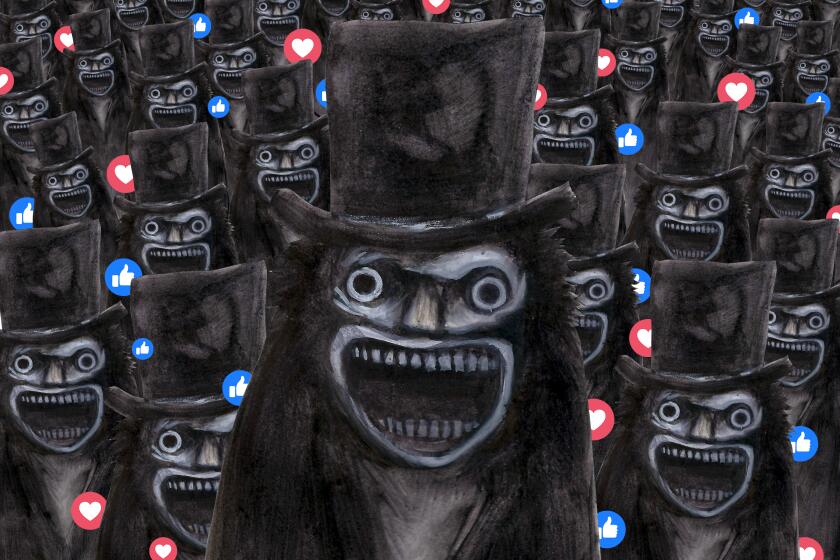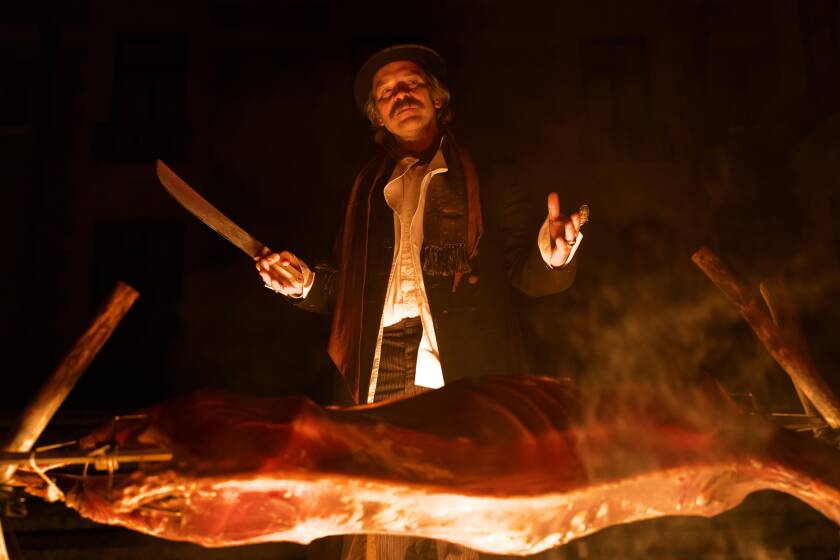Patricio Guzman keeps a watchful eye on Chile
In Patricio Guzman’s films, several of which are being screened in Los Angeles this month, the date of infamy, Sept. 11, is shrouded in smoke and bloodshed. But the year was 1973, not 2001, and the place was Santiago, Chile, not Lower Manhattan.
On that day, Chile’s democratically elected Socialist president, Salvador Allende, was overthrown in a right-wing coup d’etat led by Gen. Augusto Pinochet. Allende died in the ruins of the La Moneda presidential palace, which had been bombed by air force planes, and Pinochet went on to rule the country until 1990, a period during which more than 30,000 people are believed to have been killed, tortured, “disappeared” or driven into exile.
Meanwhile, the official narrative of the coup got spun into a heroic paean to how the military purportedly saved Chile from becoming the next Cuba. Any contradictory evidence was simply expunged from media reports, school textbooks and the national memory.
To some extent, the filmmaker believes, that’s still the case in his homeland.
“It’s a country that doesn’t take responsibility for what it has done,” Guzman said last week, speaking in Spanish, in a phone interview from his daughter’s house in Buenos Aires. “When it comes to the past, many people say, ‘It wasn’t me, I didn’t see it, I wasn’t there.’ It’s like no one was responsible for what occurred. There is no daily reminder.”
But the reminders persist in Guzman’s documentaries. The centerpiece of the series “Patricio Guzman: The Watchful Eye,” which resumes April 29 and runs through May 11 at the Hammer Museum’s Billy Wilder Theater, is his vivid epic “The Battle of Chile.” It was shot on 16mm by a four-man crew, smuggled out of the country when Guzman went into exile and reassembled and released in three parts between 1975 and 1979.
Like a forensic pathologist reconstructing evidence, or a philosopher pondering an epistemological riddle, Guzman has returned repeatedly to the scene of the national crime, in “Chile, Obstinate Memory” (1997), “The Pinochet Case” (2001) and “Salvador Allende” (2004), all of which will be screened at the Hammer. In addition to being scrupulously factual journalistic accounts of historic events, many of Guzman’s films also are quasi-poetic ruminations on the permanent scars that violence leaves on individuals and nations.
“The coup of 1973 has been such a focus of his work, it’s been kind of like a personal Big Bang,” said Paul Malcolm, a film critic and programmer for the UCLA Film & Television Archive, one of the series’ presenters. “He’s been documenting its echoes and reverberations throughout his career.”
Malcolm’s cosmic comparison is fitting. Never before has Guzman elevated his obsession with the events of 1973 to the cosmological level he does in his latest film, “Nostalgia for the Light” (2010). The documentary, which won the European Film Award for documentary and played at last year’s Cannes Film Festival, was screened April 15 at the Hammer, and will run April 22-28 at Landmark’s Nuart Theatre.
For “Nostalgia,” Guzman journeyed to the vast Atacama Desert in northern Chile, one of the driest places on the planet, a region of sublime, primordial beauty but also a graveyard of historical atrocities. Because of its remoteness, the Atacama is home to some of the world’s top observatories, whose astronomers scan the skies trying to read the histories of stars beaming light signals from out of the past. Nearby, petrified in the desert’s arid soil, lie the human remains of pre-Columbian mummies, 19th century miners who labored in slave conditions, and the bodies of victims of Pinochet’s regime who were taken to the Atacama as political prisoners and dumped there.
The film’s three-layered symbolism -- celestial, political and humanistic -- is underscored by Guzman’s measured narration and his probing interviews with astronomers, archaeologists and some of the gray-haired mothers who continue to dig through the desert in search of their slain sons’ remains.
In one lyrical visual, close-ups of the moon’s cratered surface segue into shots of a human skull’s lunar-like expanse, alluding to the link between the improbable marvel of creation and the star-begotten destiny of the human race.
Guzman, who lives in Paris, said the idea for “Nostalgia” occurred to him because he had known about the mothers searching for their missing children through press accounts and the work of the U.S. documentary photographer Paula Allen. As a lifelong science-fiction buff who read Jules Verne classics as a boy, Guzman said the Atacama observatories had long “commanded my attention. They are the world’s biggest machines for observing the elemental past.”
Physically and conceptually, Guzman treats the movie camera as another big machine for illuminating bygone times. But even today he remains rare in placing that light on the Pinochet coup and its consequences. With a few exceptions, such as Andres Wood’s 2004 feature film “Machuca,” the subject remains taboo among many Chilean filmmakers.
For Guzman, memory, as distinct from memorialization, is a deeply moral act that should be practiced on a daily basis. For an artist like himself, it’s not about building monuments, emotional “closure” or settling old scores but about maintaining thought and open conversation.
“It doesn’t have to do with revenge,” he said. “It has to do with reflection. That’s all -- and that’s a lot, for me.”
More to Read
Only good movies
Get the Indie Focus newsletter, Mark Olsen's weekly guide to the world of cinema.
You may occasionally receive promotional content from the Los Angeles Times.











